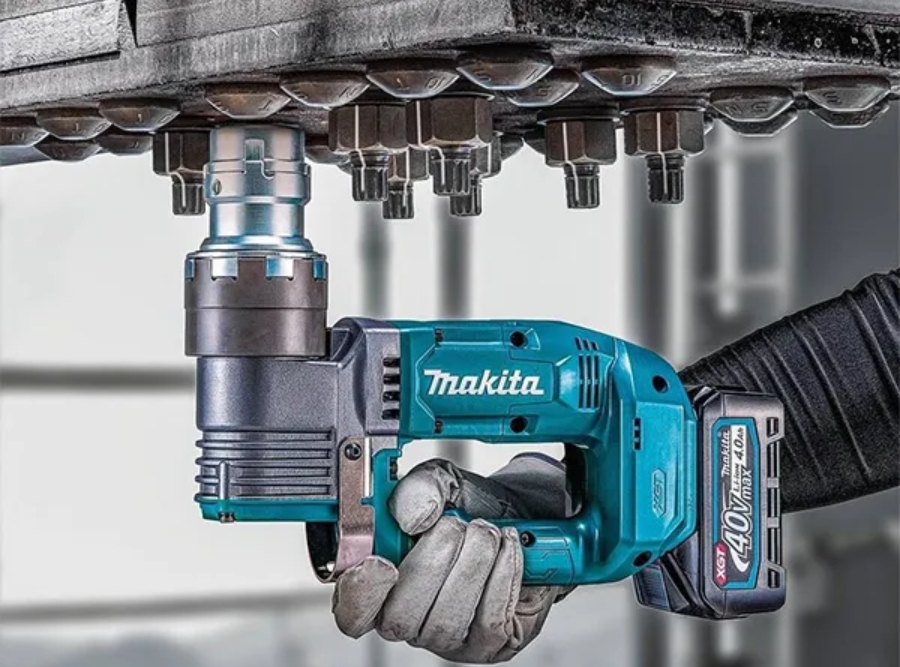Makita USA launched a new XGT cordless shear wrench, model GTW01, that’s designed to “give the Steel Erector a cordless option that takes corded tools out of the jobsite.”
The new Makita cordless shear wrench is advertised as being up to 14% faster than their corded tool, and 3.5 lbs lighter than their previous 18V LXT system model.
It features an electric brake, metal gear housing, on-tool LED charge status indicator, and shoulder strap hook.

The bolt tip ejecting lever is located near the power switch for easier tip disposal.
Shear wrenches like this one are commonly used in metal construction to tighten torsion control bolts. Upon tightening the fastener to its set torque, its head is sheared off. It’s a quick method that helps to avoid overtightening.

- Bolt Size Capacity (A325): 5/8″, 3/4″, 7/8″
- Bolt Size Capacity (A490): 5/8″, 3/4″
- Speed: 17 RPM (no-load)
- 593 ft-lbs max torque
- Weighs 12.2 lbs
- 10-5/8″ length
Makita says that the tool can tighten up to 250 M22 torque control bolts per 4Ah battery charge.
The kit ships with a 4Ah battery, Rapid Charger, inner and outer sleeve assemblies for 3/4″ (M20) and 7/8″ (M22) bolts, a screwdriver, shoulder strap, and tool case.
Price: $2999 for the kit
Makita USA Intro Video
How a Shear Wrench Works

Shown here is an example of a torsion control bolt.
Shear wrenches have inner and outer sockets. The inner socket has a spline profile and engages with the bolt tip. The outer socket engages with the hex nut.
The outer socket rotates and tightens the nut until the required torque is reached, while the inner socket builds up reaction torque but does not rotate.
When the proper torque or tension is reached, the outer socker stops rotating and the reaction torque rotates the inner socket. The tip of the bolt shears off and is then ejected and discarded.
With a traditional drill, the reaction torque is exerted on the tool body. If you let go of the drill, or if it jams or binds, the drilling or driving accessory will stop moving and the tool will rotate. With a shear wrench, the reaction torque is generated within the tool and exerted on the inner socket.
Thus, in a shear wrench, the outer socket will rotate the hex nut, with the inner socket holding the spline steady until the required torque is met. At this point, the shear limit of the spline tip is reached and it breaks off.
Here’s an animation on how they typically work:
